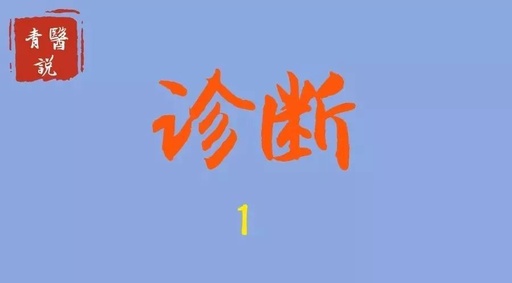Unit One: Introduction
1. Basic Principles of TCM Diagnosis: External observation to infer internal conditions, recognizing subtle signs, and using common standards to assess variations. 2. Basic Principles of TCM Diagnosis: Holistic examination, integration of the four diagnostic methods, and combining disease and syndrome.
Unit Two: Observation Diagnosis
01
Subsection One: Observing the Spirit
-
Common clinical manifestations of “gaining spirit”, “losing spirit”, “less spirit”, and “false spirit” and their significance.
|
Clinical Manifestation |
Significance |
||
|
Gaining Spirit Also known as “having spirit” |
Eyes are lively, bright, and spirited; complexion is rosy and moist; demeanor is reserved yet expressive; mental clarity; natural expressions; muscles are firm; reactions are quick. |
1.Indicates abundant vital energy, good health, and is a sign of wellness. 2.Even in illness, if vital energy is not diminished, the condition is mild and prognosis is good. |
|
|
Less Spirit Also known as “insufficient spirit” |
Eyes appear dull; lackluster gaze; complexion is pale and dull; mental fatigue; sluggish thinking; little energy to speak; muscles are soft; movements are slow. |
Indicates insufficient vital energy and reduced function, commonly seen in patients with deficiency syndromes or during recovery from illness. |
|
|
Losing Spirit Also known as “no spirit” |
① Loss of spirit due to depletion of essence and decline of spirit. Eyes are dull; lack of luster; complexion is lifeless; mental fatigue; blurred consciousness; slow reactions; involuntary urination; abnormal breathing; emaciation. |
Indicates severe depletion of vital energy and reduced function, commonly seen in patients with chronic or severe illnesses, poor prognosis. |
Severe illness manifestations, can be seen in chronic deficiency syndromes and excess pathogenic conditions. |
|
② Loss of spirit due to excessive pathogenic factors causing confusion. Confused consciousness, incoherent speech; disoriented movements; sudden collapse; stiff grip; clenched jaw. |
Indicates excessive pathogenic qi, disturbing the spirit; or liver wind with phlegm obstructing the clear orifices, blocking the meridians. This indicates severe dysfunction of the body, imbalance of qi, blood, and fluids, commonly seen in acute patients, also indicates severe illness. |
||
|
False Spirit |
① Originally dull eyes suddenly appear bright, but the light is superficial. |
Indicates extreme exhaustion of organ essence, impending loss of upright qi, yang failing to contain yin, false yang escaping, indicating imminent separation of yin and yang, often likened to “returning light” or “flickering lamp”, commonly a sign before death in critically ill patients. |
|
|
② Originally dull complexion suddenly appears rosy, but with a flushed appearance on the cheeks. |
|||
|
③ Originally in a state of confusion or extreme lethargy, suddenly appears clear-minded, wanting to see relatives, speaking incessantly, but with agitation. |
|||
|
④ Originally heavy and immobile, suddenly desires to get up and move, but cannot do so independently. |
|||
|
⑤ Originally without appetite, unable to eat for a long time, suddenly craves food, and increases food intake significantly. |
2. Common clinical manifestations of spirit disturbance and their significance.
|
Pattern |
Clinical Manifestation |
Significance |
|
Anxiety and Fear (Bèi zhèng, zàng zào) |
Patient experiences constant fear, anxiety, palpitations, shortness of breath, and does not dare to be alone. |
Often belongs to deficiency syndromes, mostly due to heart and gallbladder qi deficiency, leading to insufficient nourishment of the spirit. |
|
Manic Agitation (Kuáng zhèng) |
Patient is manic, speaks incoherently, has little sleep and many dreams, hits and curses, does not distinguish between kin and strangers, speaks nonsensically, sings loudly, and runs away without clothes. |
Often belongs to yang syndromes, mostly due to violent anger leading to qi stagnation transforming into fire, generating phlegm that disturbs the spirit. |
|
Indifference and Dementia (Diān bìng zhī dài) |
Patient appears indifferent, has dementia, mutters to themselves, alternates between crying and laughing, and is pessimistic and hopeless. |
Often belongs to yin syndromes, mostly due to worry and thought leading to qi stagnation, phlegm congealing and obscuring the spirit, or congenital insufficiency. |
|
Sudden Collapse (Xián zhèng) |
Patient suddenly collapses, foams at the mouth, eyes roll back, limbs convulse, and returns to normal after waking. |
Often due to organ qi imbalance, liver wind with phlegm rising, obstructing the clear orifices. |
02
Subsection Two: Observing Facial Color
1. Classification of normal and pathological colors, clinical manifestations, and their significance.
|
Normal Color |
General Characteristics |
Bright, moist, and reserved |
|
Classification and Characteristics |
Main Color |
Red and yellow, bright and moist (for yellow-skinned individuals) |
|
Guest Color |
Guest colors fall within the normal range but may vary due to climate, region, etc. |
|
|
Pathological Color |
General Characteristics |
Dull and exposed |
|
Classification and Characteristics |
Good Color |
Facial color may be abnormal but still bright and moist. |
|
Bad Color |
Facial color is abnormal and appears dry and dull. |
2. Clinical manifestations and significance of the five colors indicating disease.
|
Pathological Color |
Main Disease |
Syndrome Type |
Clinical Manifestation |
|
Red Color |
Mainly indicates heat syndromes, can also be seen in yang deficiency syndromes. |
Excess Heat Syndrome |
Face is flushed. |
|
Yin Deficiency Syndrome |
Flushed cheeks in the afternoon. |
||
|
Yang Deficiency Syndrome |
Chronic illness with pale complexion, but occasionally flushed. |
||
|
White Color |
Mainly indicates deficiency syndromes (including blood deficiency, qi deficiency, yang deficiency), cold syndromes, and blood loss syndromes. |
Qi deficiency with blood loss, yang decline with cold excess. |
Face appears pale. |
|
Blood Deficiency, Blood Loss Syndromes |
Face is pale and lacks luster, lips and tongue are pale. |
||
|
Yang Deficiency Syndrome |
Face appears ashen. |
||
|
Yang Deficiency with Water Retention |
Face appears ashen and swollen. |
||
|
Loss of Yang, sudden loss of qi and blood, or internal cold excess. |
Face appears pale. |
||
|
Yellow Color |
Mainly indicates spleen deficiency and dampness syndromes. |
Spleen deficiency with internal dampness. |
Face appears yellow. |
|
Spleen and stomach qi deficiency, insufficient qi and blood. |
Face appears sallow. |
||
|
Spleen deficiency with dampness retention. |
Face appears yellow and swollen. |
||
|
Jaundice |
Face appears bright yellow like orange peel, indicating yang jaundice, with damp-heat as the cause; face appears dark yellow like smoke, indicating yin jaundice, with cold-damp as the cause.
|
||
|
Blue Color |
Mainly indicates cold syndromes, qi stagnation, blood stasis, pain, and convulsions. |
Cold congealing qi stagnation, blood stasis obstructing, tendons and vessels constricted, severe pain, extreme heat causing wind. |
Face appears blue. |
|
Severe Cold, Severe Pain |
Face appears pale blue or bluish-black, such as in qi stagnation abdominal pain or cold stagnation in liver meridian. |
||
|
Internal Cold Excess, Heart Yang Collapse, True Heart Pain |
Sudden appearance of gray-blue face, cyanosis of lips, cold limbs, weak pulse. |
||
|
Heart Qi, Heart Yang Deficiency, Blood Circulation Obstruction, Lung Qi Obstruction, Difficulty Breathing |
Chronic illness with cyanosis of face and lips. |
||
|
Liver Qi Stagnation, Spleen Deficiency |
Face appears bluish-yellow (i.e., a combination of blue and yellow, also known as “canghuang”). |
||
|
Precursor to Wind Stroke |
Children with high fever and convulsions, face appears cyanotic, especially around the nose and between the eyebrows and around the lips. |
||
|
Black Color |
Mainly indicates kidney deficiency, cold syndromes, water retention, blood stasis, and severe pain. |
Kidney Yang Deficiency, Severe Pain. |
Face appears black. |
|
Kidney Yang Deficiency |
Face appears dark or blackish. |
||
|
Kidney Yin Deficiency |
Face appears black and dry. |
||
|
Kidney Deficiency, Water Retention, Cold Dampness |
Dark circles around the eyes. |
||
|
Blood Stasis |
Face appears black, skin is rough. |
3. Significance of facial color diagnosis: 1. Assessing the abundance or deficiency of qi and blood. 2. Identifying the nature of pathogenic factors. 3. Determining the location of disease. 4. Predicting the severity and prognosis of disease.
03
Subsection Three: Observing Body Shape
1. Clinical manifestations of body strength, fatness, and thinness and their significance.
|
Disease Name |
Clinical Manifestation |
|
Obesity |
Fat but able to eat indicates excess form and energy; fat but with little appetite indicates excess form and deficiency of energy. |
|
Etiology: Preference for rich and fatty foods, preference for inactivity, spleen dysfunction. |
|
|
“Fat people often have phlegm” and “fat people often have dampness” |
|
|
Thinness |
Thin with good appetite indicates fire in the middle jiao; thin with poor appetite indicates weakness of middle qi. |
|
Etiology: Spleen and stomach weakness, deficiency of qi and blood. |
|
|
“Thin people often have fire” |
|
|
As stated in the “Inner Canon”, “great bones are withered, great flesh is sunken”, indicating severe exhaustion of organ essence, indicating critical condition. |

01
View answer analysis
Click on the blank area to view the answer
Correct answer: A
Examiner’s thought process: Examining the black color indicating disease in the five colors.
Question analysis:
A cold syndrome, water retention are both indicated by black color.
B Kidney deficiency is indicated by black; spleen deficiency is indicated by yellow.
C Blood stasis is indicated by black or blue; dampness is indicated by yellow.
D Pain syndrome is indicated by black or blue; convulsions are indicated by blue.
Knowledge point link:
The five colors indicating disease mainly examine the black and blue colors; yellow has been less examined in previous years.
Yellow: Mainly indicates spleen deficiency and dampness syndromes.
Blue: Mainly indicates cold syndromes, qi stagnation, blood stasis, pain, and convulsions (qi, blood, cold, pain, wind).
Black: Mainly indicates kidney deficiency, cold syndromes, water retention, blood stasis, and severe pain (kidney deficiency, water, cold, blood stasis, pain).
National Medicine Team Tips: Blue mnemonic: qi, blood, cold, pain, wind; black mnemonic: kidney deficiency, water, cold, blood stasis, pain; blue-black common disease mnemonic: cold blood pain.
Previous selections

Seven dead, seven sentenced to death, one life imprisonment! Zero tolerance is not just talk, please share the sentence, one life imprisonment! Zero tolerance is not just talk, please share.
Editor: Han Shui Shi


